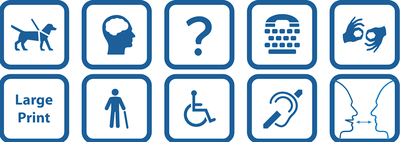Budgeting For Access
When planning events—meetings, conferences, roundtables, seminars, etc.—there are accommodations necessary to ensure that attendees with disabilities and Deaf attendees have complete access to the venue and the event’s presentations and materials. Although many modifications and accommodations have little-to-no cost, some accommodations do. This tip sheet is designed to provide you with information and cost estimates so you can incorporate those considerations into funding proposals and budgets for your event. Including accurate estimates for common meeting expenses and specific disability accommodation line items in your budget is essential to meeting your obligations and creating a welcoming environment for attendees with disabilities and Deaf attendees.
*For a downloadable version, Please click HERE

Budgeting for Individual Accommodations
Some of the most common individual accommodations include ASL interpreters, materials in electronic format, materials in large print, and CART,. Creating a standard set of accommodations that you always build into your event budgets will give you greater flexibility. For example, you may not always have requests for both CART and an interpreter at the same event, but setting these dollars aside gives you the ability to absorb unforeseen costs or reallocate that money to other requests or expenses as needed.
Additional Resources
U.S. Department of Justice > ADA Home Page > www.ada.gov
Information and Technical Assistance on the Americans with Disabilities Act
ADA National Network > www.adata.org
Information, Guidance, and Training on the ADA available through 10 Regional Centers
Association of Assistive Technology Act Programs (ATAP) >www.ataporg.org
Resource on and link to Assistive Technology Programs in Your State

